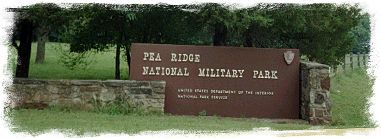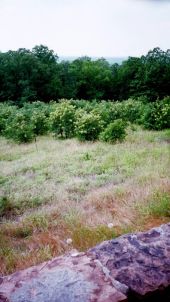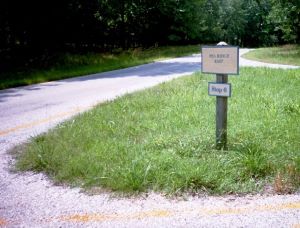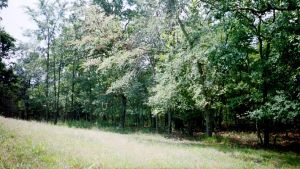
Stop 7 & 8: Elkhorn Tavern
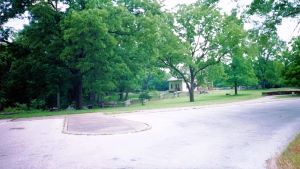
A landmark in this area for many years, the tavern was near the center
of fighting on both days of the battle. The original tavern was burned
by guerrillas after the battle, then rebuilt after the war. The
existing building is a reconstruction.
The Confederates made their first assault on
Union forces from the Telegraph Road north of the tavern and gradually
pushed them back about one-half mile behind you. On the second day,
after a fierce artillery duel, the Confederates ran out of ammunition,
forcing General Van Dorn to withdraw. The Federals pursued several
hundred stragglers down the Telegraph Road, believing them to be the
main force, thus allowing the bulk of Van Dorn's column to escape
eastward over the Huntsville Road.
|
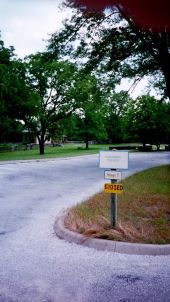
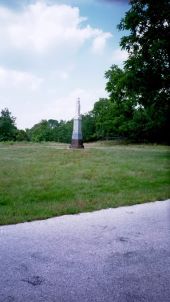
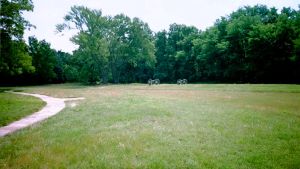
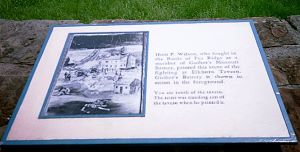
"Hunt P. Wilson, who fought in the Batle of Pea Ridge as a member of Guibor's Missouri Battery, painted this scene of the fighting at Elkhorn Tavern. Guibor's Battery is shown in action in the foreground. You are south of the tavern. The artist was standing east of the tavern when he painted it."
|

